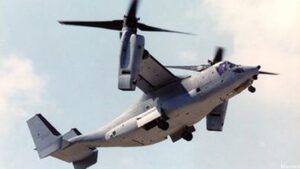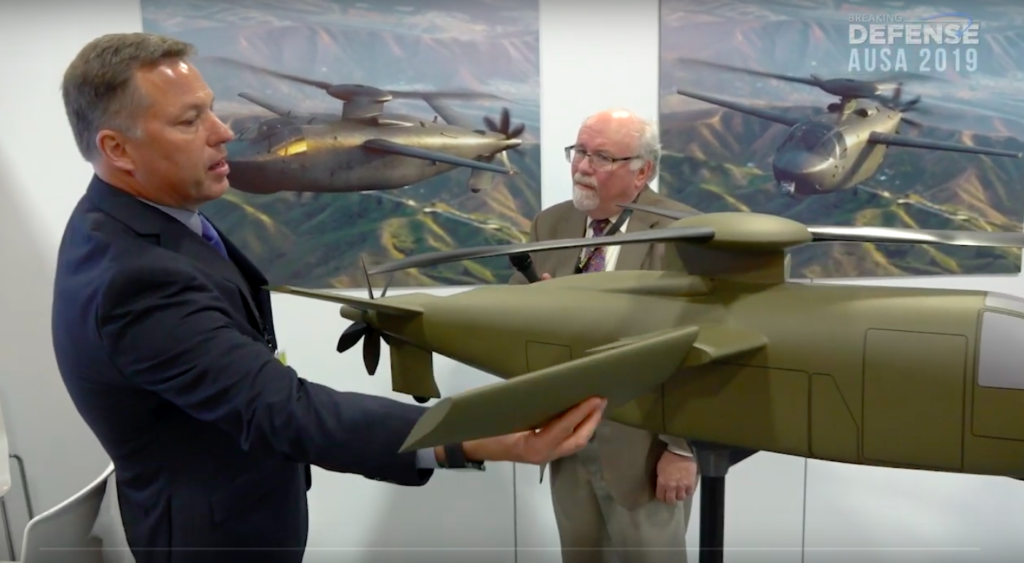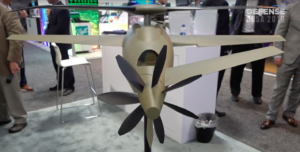AUSA: Abe Karem, father of the Predator drone, has come up with another novel design for the US military. His Karem AR-40, unveiled at last week’s Association of the US Army conference, is one of five designs competing for the Army’s Future Attack Reconnaissance Aircraft — and it’s very different from the other three that have been revealed by Sikorsky, AVX, and Bell. (Boeing is the one contender still deliberately concealing every detail of its design).

The Army’s Future Vertical Lift effort, of which the FARA scout is the most urgent part, calls for new kinds of aircraft that can take off, hover, and land like a helicopter but reach speeds and ranges historically attainable only by fixed-wing aircraft. The only such hybrid aircraft to enter mass production is the Bell-Boeing V-22 Osprey, which is a tiltrotor, so-called because its two huge rotors can either tilt so they’re spinning parallel to the ground to fly like a helicopter or spin at right angles to the ground like giant propellers. Bell is offering their V-280 Valor tiltrotor for the larger and less urgent version of Future Vertical Lift, the Future Long-Range Assault Aircraft (FLRAA).
Karem, too, is best known for what it calls its “optimized tiltrotor” designs. But, like Bell, it decided tiltrotors — with those two huge rotors mounted on opposite sides of the aircraft — were just too wide for FARA, which the Army wants to be no wider than 40 feet so it can take cover behind buildings in urban combat. So Bell’s offering for FARA, the Bell 360 Invictus, is basically a conventional helicopter with short wings to help generate lift at higher speeds.

Karem’s AR-40 looks similar — like the Bell 360, it’s a helicopter with a single main rotor and short wings — but it has some big differences. First of all, even though the Karem FARA design is not a tiltrotor, its wings do tilt. That allows them to bite the air at the optimal angle for different modes of flight, Karem program manager Thomas Berger shows our own Rick Whittle in the accompanying video. You can orient them like normal wings, parallel to the ground, to provide additional lift in high-speed flight. Or you can tilt them at right angles to the ground, so the downwash from the main rotor slips past them; That allows more efficient hovering and low-speed flight, since the rotor is no longer pushing down on the aircraft’s own wings.
Even more unusual is that the aircraft’s tail rotor tilts. For low-speed flight, it tilts sideways, like the tail rotor on a normal helicopter, to counter the torque from the main rotor. But for high-speed flight, the aircraft’s tailplanes — which are asymmetrical — provide stability, so the tail rotor tilts 90 degrees and starts acting as a pusher propeller, providing additional thrust.

All told, Berger said, the aircraft can exceed the Army’s minimum required cruising speed by 20 percent, which would translate to 216 knots (almost 250 mph). By contrast, Bell has repeatedly refused to say whether their design could exceed 205 knots.
The AR-40 is a unique design, innovative but unproven. The Karem Aircraft company is innovative but unproven too, having never built a mass-production aircraft. For FARA, however, Karem has partnered with two big defense contractors to beef up its bid: Northrop Grumman is building much of the airframe and will provide mass-production expertise, while Raytheon puts together the mission equipment. (In addition, the engine is a GE T901 Improved Turbine, but the Army wants that on all the competitors’ designs). Karem itself is focusing on the rotor design and the drive.
Karem’s already won one of the five Army contracts to come up with preliminary FARA designs. But come February, only two contenders will get contracts to build full-up flying prototypes. That will be the crucial test for Karem and its bigger teammates.
Read the rest of our series of stories on the five contenders for the Future Attack Reconnaissance Aircraft:

